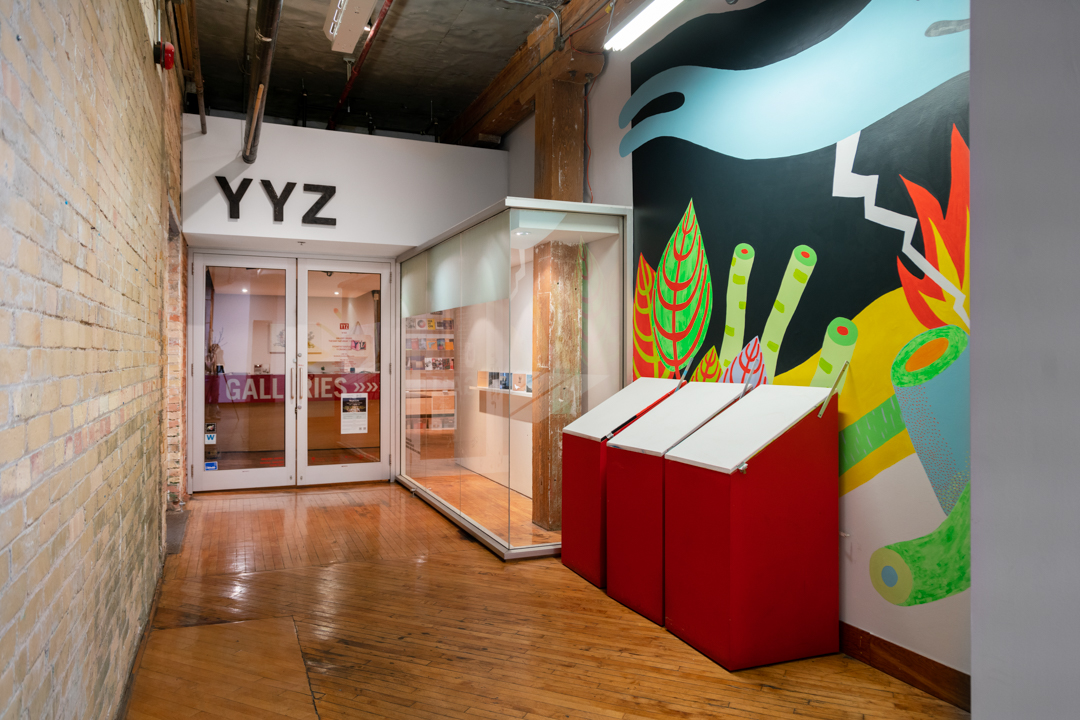A new mural for our YYZ Lending Library by Rowan Red Sky for the 2019-2020 programming year.
‘Disturbed landscapes’ are sites abandoned to nature where human habitation and industrialization has disrupted the native habitat. Many native and naturalized plants with healing properties grow abundantly in disturbed landscapes. As part of nature’s longing for balance and harmony, these plants break up heavy clay soil and enrich gravelly, sandy soils. They bolster river banks and support lakes’ edges. Their presence and medicines heal our minds and bodies.
The Leslie Street Spit is one of these disturbed landscapes, where Dogwood and Poplar trees grow in abundance and hold the landscape together. Red Osier Dogwood is a plant that was traditionally used in Indigenous smoking mixtures, and its roots help hold the shore together against eroding waves and currents. Quaking Aspen (poplar) is the forerunner of Aspirin, but it’s also a tree that repopulates cleared areas of forest very quickly. It’s short lifespan ensures that individual trees fall quickly to slower growing trees — its strength is made most obvious when we consider an entire cycle of life and death. The Spit is a reflection of Toronto’s past and future in a harmonized state of constant decay, growth, and transformation.
The bear is essentialized in Oneida culture as a representative of all healing practices because his foraging consumes plants of medicinal value. Because he is true to his own inner nature, he is gifted with the knowledge of natural cycles and healthy balance. He’s described as Howatsa’tâtha (ho waht sa dawn ta) or, he is covered with mist. Misty Bear’s landscape is caught in a moment of dual tensions and change. We observe imminent destruction, but also see evidence of thrivance. In this scene he embodies the electrified tension between water and fire when pictured as a massive cloud delivering thunderbolts to the landscape.
Documentation
Artist Bio
Rowan Red Sky
Rowan Red Sky is based in Toronto, ON. They are a multidisciplinary artist currently developing a new body of work in mural arts inspired by Ukwehuwe culture, history, and language. Observations of medicinal plants, genderqueer expression, and gestural painting styles influence their murals. As a traditional singer they perform professionally and teach Indigenous singing in local Anishinaabe and Ukwehuwe styles. They graduated with a BFA from the publications program at OCAD University while producing an award-winning collaborative community arts project in their final year.
Documentation by: Yuula Benivolzki







